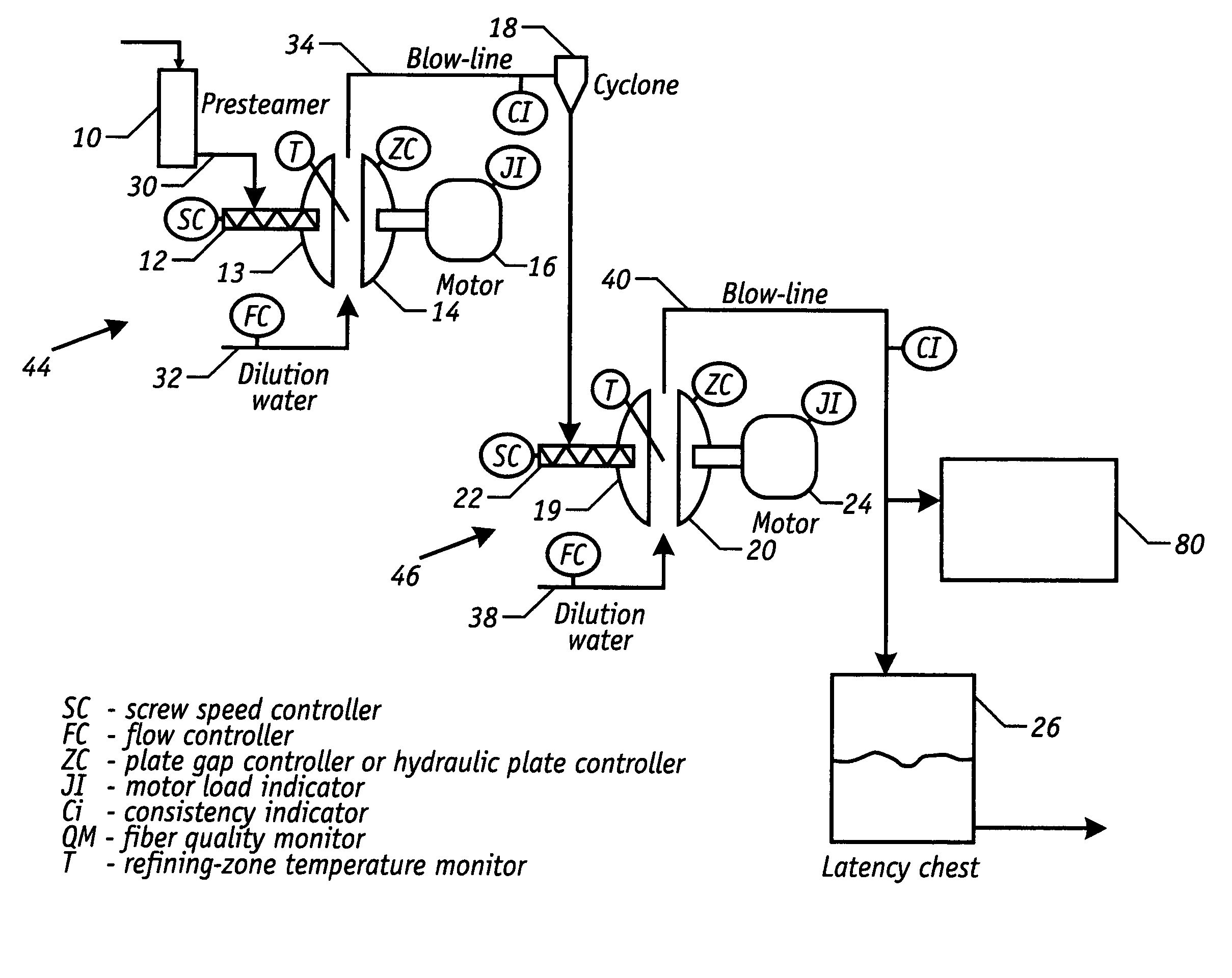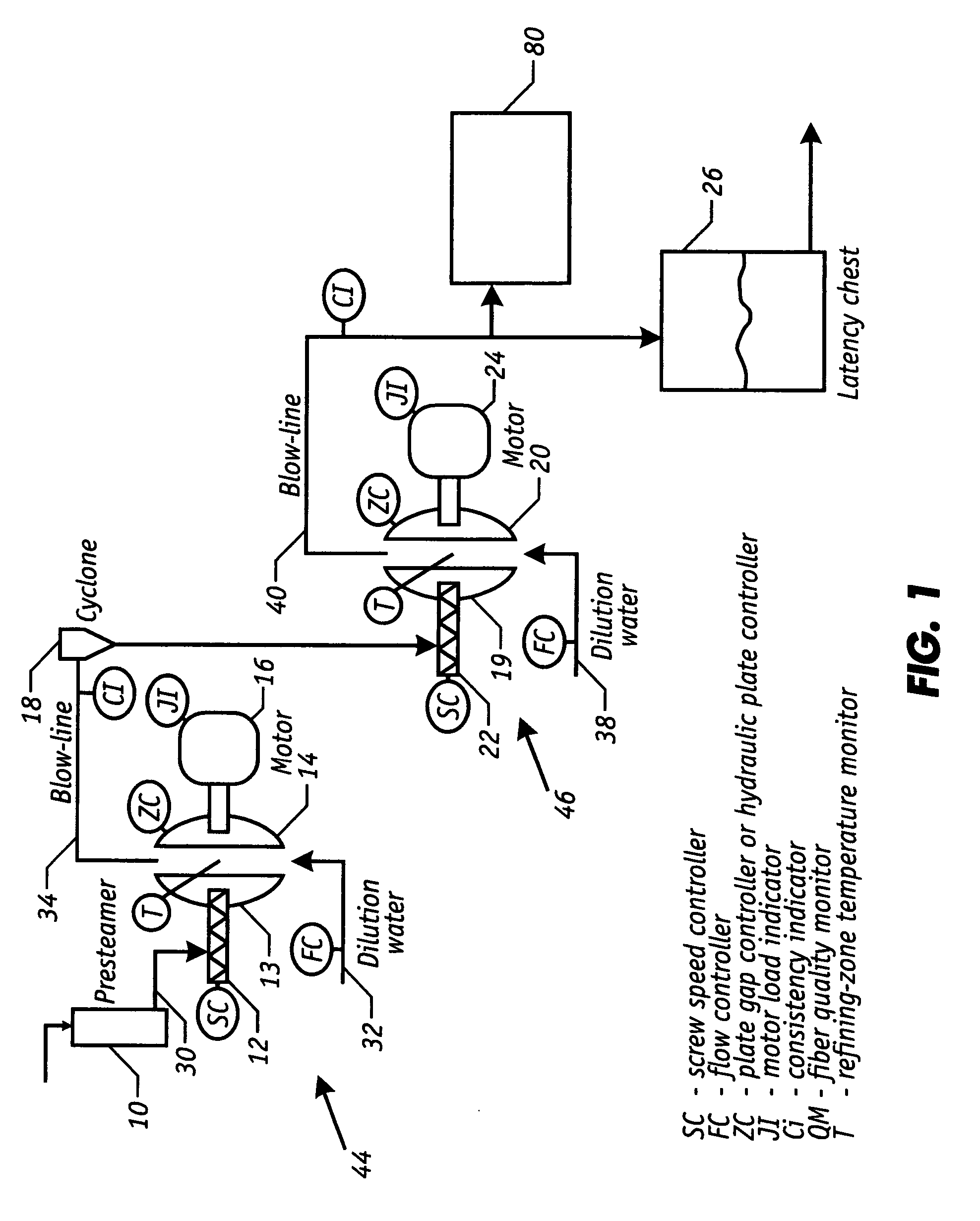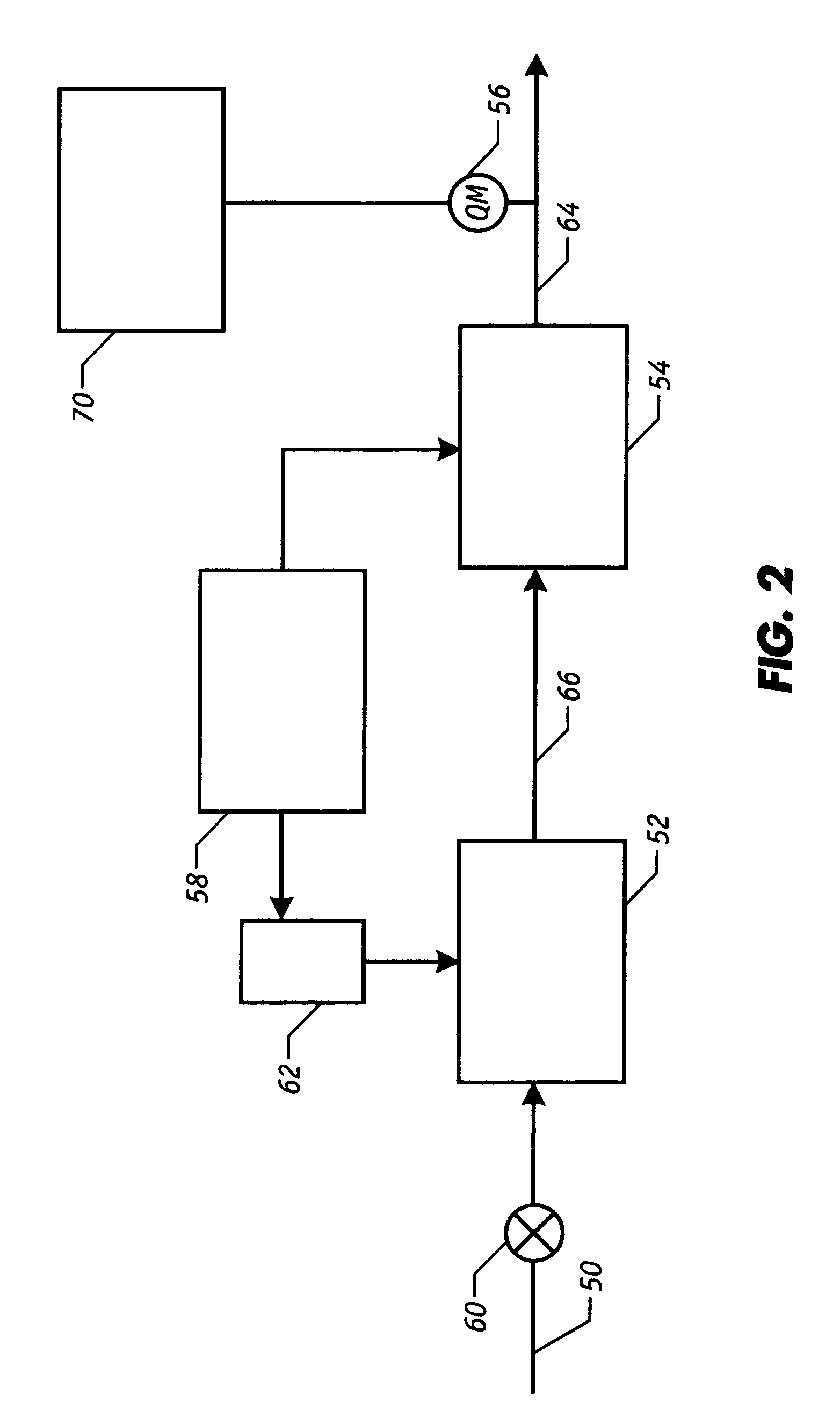Rapid sampling assembly for thermo-mechanical pulp control application
- Summary
- Abstract
- Description
- Claims
- Application Information
AI Technical Summary
Benefits of technology
Problems solved by technology
Method used
Image
Examples
Embodiment Construction
[0032] The present invention is directed to a pulp sampling assembly that can be employed in a continuous or batch mode. While the invention is particularly suited for use with thermo-mechanical pulp (TMP) processes, it is understood that the pulp sampling assembly can be employed with any pulping process to remove latency from pulp samples derived from various stages of the pulping process.
[0033] In a preferred embodiment of the inventive technique, a sample of high consistency pulp is diluted with hot or boiling water. After the latency is removed from the sample by hot disintegration, the sample can be analyzed with any pulp quality analyzer. Typically, the initial sample, which has a consistency of about 25% to 60%, is diluted to a consistency of about 0.1% to 5% and preferably about 4%. The term “consistency” describes the relative fiber content in a given stock quantity. Thus, an increase in consistency of the pulp stock indicates a relative increase in the dry, wood fiber co...
PUM
 Login to View More
Login to View More Abstract
Description
Claims
Application Information
 Login to View More
Login to View More - R&D
- Intellectual Property
- Life Sciences
- Materials
- Tech Scout
- Unparalleled Data Quality
- Higher Quality Content
- 60% Fewer Hallucinations
Browse by: Latest US Patents, China's latest patents, Technical Efficacy Thesaurus, Application Domain, Technology Topic, Popular Technical Reports.
© 2025 PatSnap. All rights reserved.Legal|Privacy policy|Modern Slavery Act Transparency Statement|Sitemap|About US| Contact US: help@patsnap.com



